Related Research Articles

Nokia Bell Labs, originally named Bell Telephone Laboratories (1925–1984), then AT&T Bell Laboratories (1984–1996) and Bell Labs Innovations (1996–2007), is an American industrial research and scientific development company owned by Finnish company Nokia. It is headquartered in Murray Hill, New Jersey, and operates a global network of laboratories.

A telephone is a telecommunications device that permits two or more users to conduct a conversation when they are too far apart to be easily heard directly. A telephone converts sound, typically and most efficiently the human voice, into electronic signals that are transmitted via cables and other communication channels to another telephone which reproduces the sound to the receiving user. The term is derived from Greek: τῆλε and φωνή, together meaning distant voice. A common short form of the term is phone, which came into use early in the telephone's history. Nowadays, phones are almost always in the form of smartphones or mobile phones, due to technological convergence.

The National Inventors Hall of Fame (NIHF) is an American not-for-profit organization, founded in 1973, which recognizes individual engineers and inventors who hold a U.S. patent of significant technology. Besides the Hall of Fame, it also operates a museum in Alexandria, Virginia, sponsors educational programs, and a collegiate competition.

Almon Brown Strowger was an American inventor who gave his name to the Strowger switch, an electromechanical telephone exchange technology that his invention and patent inspired.
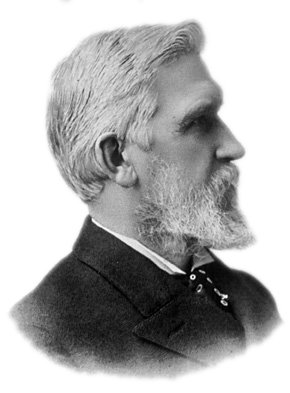
Elisha Gray was an American electrical engineer who co-founded the Western Electric Manufacturing Company. Gray is best known for his development of a telephone prototype in 1876 in Highland Park, Illinois. Some recent authors have argued that Gray should be considered the true inventor of the telephone because Alexander Graham Bell allegedly stole the idea of the liquid transmitter from him. Although Gray had been using liquid transmitters in his telephone experiments for more than two years previously, Bell's telephone patent was upheld in numerous court decisions.
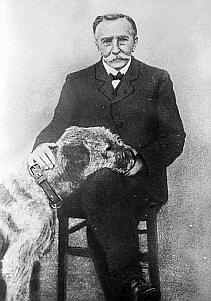
This timeline of the telephone covers landline, radio, and cellular telephony technologies and provides many important dates in the history of the telephone.
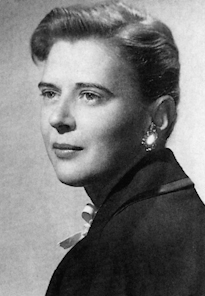
Beatrice Alice Hicks was an American engineer, the first woman engineer to be hired by Western Electric, and both co-founder and first president of the Society of Women Engineers. Despite entering the field at a time where engineering was seen as an inappropriate career for a woman, Hicks held a variety of leadership positions and eventually became the owner of an engineering firm. During her time there, Hicks developed a gas density switch that would be used in the U.S. space program, including the Apollo Moon landing missions.
Alfred Yi Cho is a Chinese-American electrical engineer, inventor, and optical engineer. He is the Adjunct Vice President of Semiconductor Research at Alcatel-Lucent's Bell Labs. He is known as the "father of molecular beam epitaxy"; a technique he developed at that facility in the late 1960s. He is also the co-inventor, with Federico Capasso of quantum cascade lasers at Bell Labs in 1994.

Radia Joy Perlman is an American computer programmer and network engineer. She is a major figure in assembling the networks and technology to enable what we now know as the internet. She is most famous for her invention of the Spanning Tree Protocol (STP), which is fundamental to the operation of network bridges, while working for Digital Equipment Corporation, thus earning her nickname "Mother of the Internet". Her innovations have made a huge impact on how networks self-organize and move data. She also made large contributions to many other areas of network design and standardization: for example, enabling today's link-state routing protocols, to be more robust, scalable, and easy to manage.

This history of the telephone chronicles the development of the electrical telephone, and includes a brief overview of its predecessors. The first telephone patent was granted to Alexander Graham Bell in 1869.
Stored program control (SPC) is a telecommunications technology for telephone exchanges. Its characteristic is that the switching system is controlled by a computer program stored in a memory in the switching system. SPC was the enabling technology of electronic switching systems (ESS) developed in the Bell System in the 1950s, and may be considered the third generation of switching technology. Stored program control was invented in 1954 by Bell Labs scientist Erna Schneider Hoover, who reasoned that computer software could control the connection of telephone calls.
A transistor is a semiconductor device with at least three terminals for connection to an electric circuit. In the common case, the third terminal controls the flow of current between the other two terminals. This can be used for amplification, as in the case of a radio receiver, or for rapid switching, as in the case of digital circuits. The transistor replaced the vacuum-tube triode, also called a (thermionic) valve, which was much larger in size and used significantly more power to operate. The first transistor was successfully demonstrated on December 23, 1947, at Bell Laboratories in Murray Hill, New Jersey. Bell Labs was the research arm of American Telephone and Telegraph (AT&T). The three individuals credited with the invention of the transistor were William Shockley, John Bardeen and Walter Brattain. The introduction of the transistor is often considered one of the most important inventions in history.
Amos Edward Joel Jr. was an American electrical engineer, known for several contributions and over seventy patents related to telecommunications switching systems.
Raymond Waibel Ketchledge was an American engineer, known for his contributions to the first computerized telephone switching control systems.

Lorinda Cherry was an American computer scientist and programmer. Much of her career was spent at Bell Labs, where she was for many years a member of the original Unix Lab. Cherry developed several mathematical tools and utilities for text formatting and analysis, and influenced the creation of others.

Richard H. Frenkiel is an American engineer, known for his significant role in the early development of cellular telephone networks.
Michael Tompsett is a British-born physicist, engineer, and inventor, and the founder director of the US software company TheraManager. He is a former researcher at the English Electric Valve Company, who later moved to Bell Labs in the United States. Tompsett invented CCD imagers and designed and built the first ever video camera with a solid-state (CCD) sensor. Tompsett received the Queen Elizabeth Prize for Engineering in 2017, with Eric Fossum, George Smith, and Nobukazu Teranishi. Tompsett has also received two other lifetime awards; the New Jersey Inventors Hall of Fame 2010 Pioneer Award, and the 2012 IEEE Edison Medal. The thermal-imaging camera tube developed from his invention also earned a Queen's Award in 1987.
Dawon Kahng was a Korean-American electrical engineer and inventor, known for his work in solid-state electronics. He is best known for inventing the MOSFET, along with his colleague Mohamed Atalla, in 1959. Kahng and Atalla developed both the PMOS and NMOS processes for MOSFET semiconductor device fabrication. The MOSFET is the most widely used type of transistor, and the basic element in most modern electronic equipment.
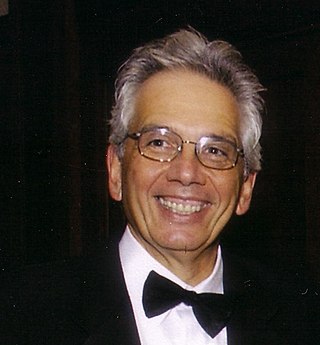
Richard D. Gitlin is an electrical engineer, inventor, research executive, and academic whose principal places of employment were Bell Labs and the University of South Florida (USF). He is known for his work on digital subscriber line (DSL), multi-code CDMA, and smart MIMO antenna technology all while at Bell Labs.
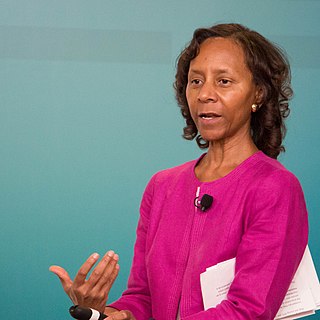
Marian Rogers Croak is a Vice President of Engineering at Google. She was previously the Senior Vice President of Research and Development at AT&T. She holds more than 200 patents. She was inducted into the Women in Technology International Hall of Fame in 2013. In 2022, Croak was inducted into the National Inventors Hall of Fame for her patent regarding VoIP Technology. She is one of the first two Black women to receive that honor, along with Patricia Bath. Her invention allows users to make calls over the internet instead of a phone line. Today, the widespread use of VoIP technology is vital for remote work and conferencing.
References
- 1 2 3 4 5 6 7 8 "Hall of Fame -- induction info". National Inventors Hall of Fame. 2008. Archived from the original on 2012-04-28. Retrieved 2012-06-05.
- 1 2 3 4 5 6 7 8 9 10 11 12 13 14 15 16 17 18 19 20 21 22 "Erna Hoover -- Biography". World of Computer Science. 2012. Retrieved 2012-06-17.
- ↑ National Inventors Hall of Fame Archived 2010-07-09 at the Wayback Machine website. Accessed March 18, 2010.
- 1 2 3 4 Amy Ellis Nutt (June 18, 2008). "Fame calls on 2 titans of telephony in NJ". The Star-Ledger. Retrieved 2012-06-05.
- 1 2 3 Calvin Sims (March 9, 1987). "BELL LABS: ADAPTING TO MONOPOLY'S END". The New York Times. Retrieved 2012-06-05.
- ↑ Hall of Fame Archived 2018-11-18 at the Wayback Machine , Columbia High School. Accessed November 12, 2018.
- 1 2 3 4 5 "Erna Schneider Hoover profile". Global History Network of IEEE. 2012. Retrieved 2012-06-17.
- ↑ "Biography". Fact Monster. 2012-06-17. Retrieved 2012-06-17.
- 1 2 "Erna Schneider Hoover profile". Maximumpc.com. 2012-06-17. Retrieved 2012-06-17.
- 1 2 tim.faiella (2023-05-01). "2023 Pioneer in Tech Award Recipient Dr. Erna Schneider Hoover | National Center for Women & Information Technology". ncwit.org. Retrieved 2023-06-15.
- 1 2 Alpha Doggs (February 15, 2008). "Phone switching pioneers to be inducted in National Inventors Hall of Fame". Network World. Archived from the original on 2011-01-03. Retrieved 2012-06-17.
- 1 2 3 4 "Hoover, Erna (Schneider)". Smart Computing. 2012. Retrieved 2012-06-17.
- ↑ "Erna Schneider Hoover Computerized Telephone Switching System". Massachusetts Institute of Technology. 2012. Archived from the original on 2018-01-15. Retrieved 2012-06-17.
- ↑ See Patent #3623007 November 23, 1971
- ↑ "Former TCNJ Board member elected to National Inventors Hall of Fame". The College of New Jersey. February 18, 2008. Retrieved 2012-06-17.